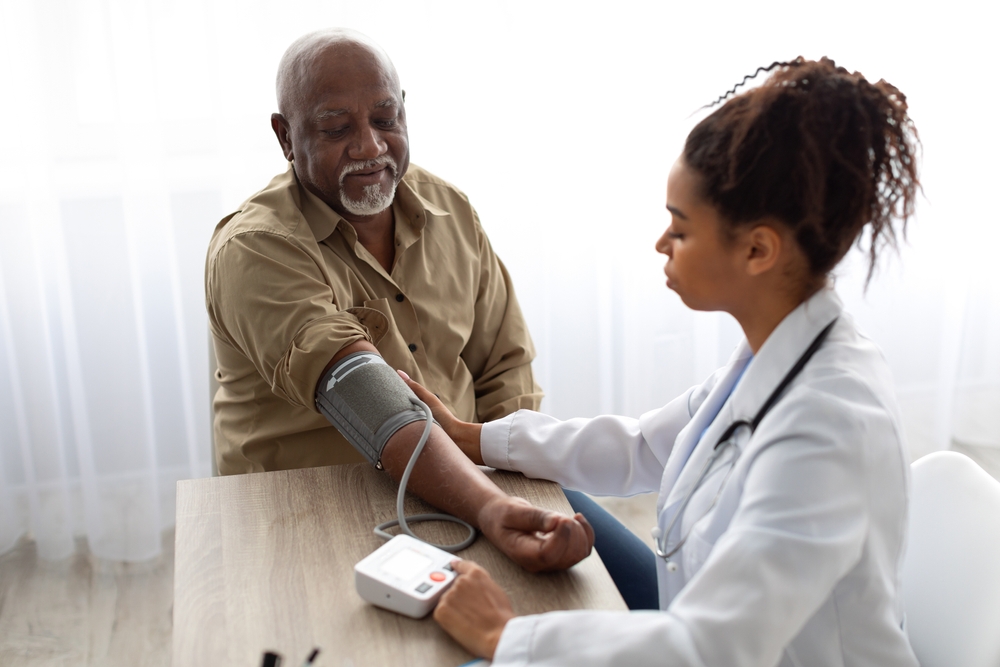High blood pressure, or hypertension, earns its reputation as the silent killer by developing stealthily until serious complications arise. While millions of Americans live with this condition daily, many remain unaware their blood pressure has reached critical levels. Understanding these warning signs could mean the difference between effective management and severe health consequences. Early detection and prompt medical intervention significantly improve outcomes for individuals with dangerously high blood pressure.
Critical warning signs
Persistent headaches
These aren’t ordinary stress headaches. The warning signs include sudden, throbbing pain that conventional painkillers can’t resolve. The sensation often manifests as pressure in the temples, behind the eyes, or across the forehead. This occurs because elevated blood pressure forces blood vessels in the brain to constrict, creating intense pressure. While headaches alone don’t always indicate high blood pressure, when combined with other symptoms, they warrant immediate medical attention. These headaches typically persist despite normal remedies and may worsen with physical activity or sudden movements.
Vision changes
Elevated blood pressure can damage the delicate blood vessels in the eyes, leading to a condition known as hypertensive retinopathy. This serious condition manifests through various symptoms:
- Sudden blurring or double vision
- Appearance of dark spots or floaters
- Partial or temporary vision loss
- Difficulty focusing on near objects
- Increased sensitivity to light
- Risk of permanent retinal damage
These vision problems often develop gradually but can suddenly worsen when blood pressure reaches dangerous levels. The damage to eye blood vessels can serve as an early warning sign of similar damage occurring in other parts of the body, particularly the brain and kidneys.
Cardiovascular indicators
The heart bears the primary burden of high blood pressure, leading to noticeable symptoms that shouldn’t be ignored. These signs often indicate advanced stages of hypertension requiring immediate medical intervention.
Chest discomfort and irregular heartbeats
The cardiovascular system shows strain through various symptoms:
- Fluttering sensations in the chest
- Racing heartbeat that doesn’t normalize with rest
- Sharp or dull chest pain
- Pain radiating to arms, neck, or jaw
- Irregular heart rhythms
- Sensation of missed or extra heartbeats
- Difficulty lying flat due to chest discomfort
These symptoms indicate the heart is working harder than necessary against elevated pressure, potentially leading to enlargement and increased risk of complications. The extra workload on the heart can cause structural changes over time, making it less efficient at pumping blood throughout the body.
Additional critical symptoms
Physical distress signals
The body responds to dangerous blood pressure levels through various symptoms that might seem unrelated but often signal serious underlying issues:
- Persistent nausea throughout the day
- Unexpected dizziness, especially when changing positions
- Sensation of impending fainting
- Unexplained vomiting
- Morning headaches
- Ringing in the ears
- Confusion or difficulty concentrating
- Unusual fatigue or weakness
Breathing difficulties
When high blood pressure affects the heart and lungs, it may cause several respiratory issues:
- Shortness of breath during mild activity
- Chest tightness that worsens with exertion
- Persistent dry cough
- Breathing problems while resting
- Nighttime breathing difficulties
- Feeling of suffocation or air hunger
- Inability to sleep flat due to breathing issues
Management strategies
Taking control of blood pressure requires consistent effort and comprehensive lifestyle modifications. Healthcare providers recommend several key approaches:
Dietary approaches
- Increase potassium-rich foods like bananas, sweet potatoes, and leafy greens
- Choose magnesium and fiber-rich options such as whole grains and legumes
- Limit sodium intake to less than 2,300 mg daily
- Focus on whole grains and lean proteins
- Incorporate heart-healthy fats from sources like olive oil and avocados
- Reduce processed food consumption
- Monitor portion sizes and overall caloric intake
Physical activity
Regular exercise remains crucial for blood pressure management. Aim for 150 minutes of moderate-intensity activity weekly, spread across multiple sessions. This can include:
- Brisk walking
- Swimming
- Cycling
- Low-impact aerobics
- Strength training under proper guidance
- Flexibility exercises
- Supervised cardiac rehabilitation when recommended
Prevention and monitoring
Maintaining healthy blood pressure levels requires vigilance and regular monitoring. Healthcare providers emphasize the importance of:
- Regular blood pressure checks at home and medical offices
- Consistent medication adherence if prescribed
- Lifestyle modifications maintained long-term
- Stress management techniques
- Regular exercise routine
- Sleep hygiene improvement
- Weight management
- Regular medical check-ups
- Blood pressure diary keeping
- Understanding personal triggers
High blood pressure poses significant health risks, but recognizing warning signs enables early intervention. Healthcare providers stress that understanding these symptoms and responding promptly can prevent life-threatening complications. The key lies in maintaining awareness, following prescribed treatments, and making sustainable lifestyle changes.
This story was created using AI technology.
















